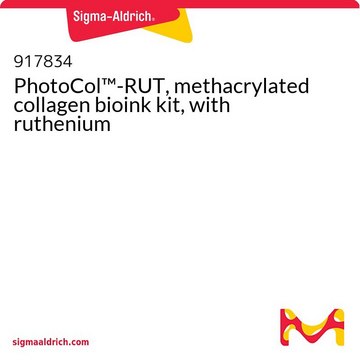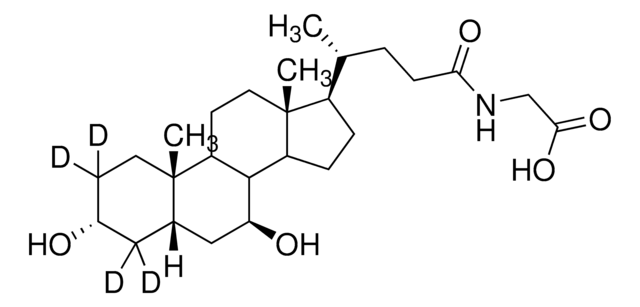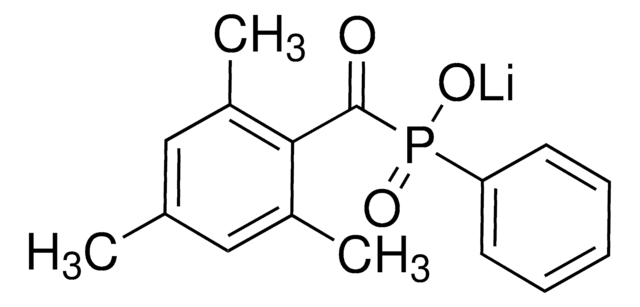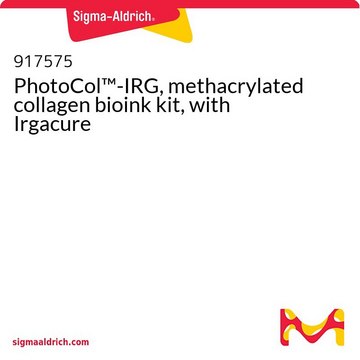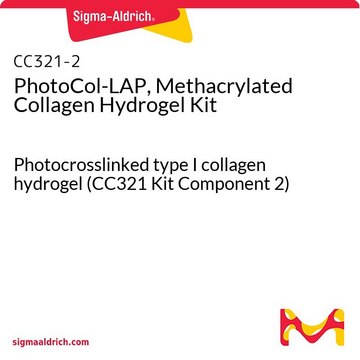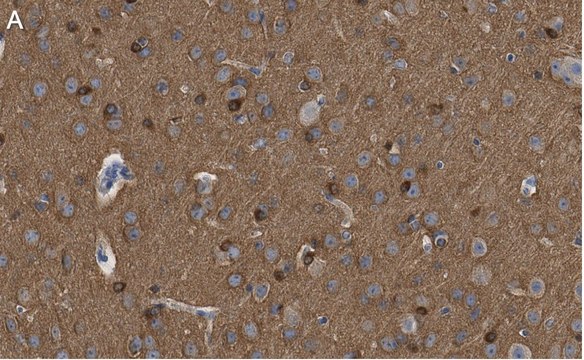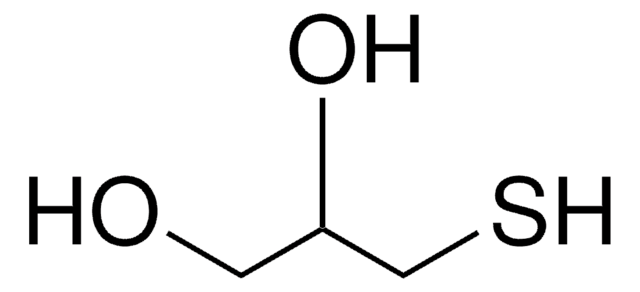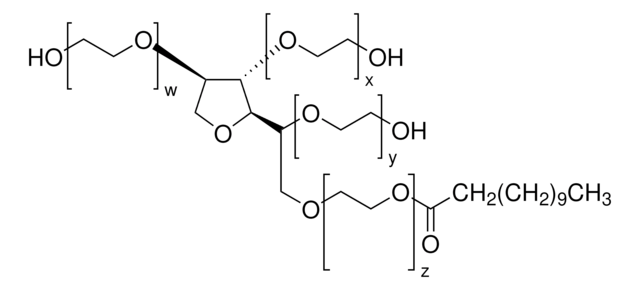916293
PhotoCol™-LAP
methacrylated collagen bioink kit, with LAP
Synonym(s):
3D Bioprinting, Bioink, Collagen
Sign Into View Organizational & Contract Pricing
All Photos(1)
About This Item
UNSPSC Code:
12352201
NACRES:
NA.23
Recommended Products
description
Methacrylated collagen:
Degree of methacrylation ≥ 20%
Product components :
Quality Level
sterility
sterile; sterile-filtered
form
liquid
impurities
≤10 EU/mL Endotoxin
storage temp.
2-8°C
Application
PhotoCol™-LAP bioink kit consists of purified methacrylated Type I bovine collagen as the core component with other support reagents. The methacrylated Type I collagen is produced from telo-peptide intact bovine collagen where the collagen has been modified by reacting the free amines, primarily the ε-amines groups of the lysine residues as well as the a-amines groups on the N-termini. Over 20% of the total lysine residues of the collagen molecule have been methacrylated. A bottle of 20 mM acetic acid solution is provided to solubilize the lyophilized methacrylated collagen at concentrations ranging from 3 to 8 mg/ml. The neutralization solution consists of an alkaline 10X phosphate buffered saline (PBS) solution which provides physiological salts and pH in the final mixture. The photoinitiator consists of LAP to be formulated in 1X cell culture media or PBS, which allows blue light photocrosslinking of the printed structure at 405 nm. PhotoCol™-LAP provides native-like 3D collagen gels, and the final gel stiffness can be customized by changing collagen concentrations and crosslinking.
Legal Information
PhotoCol is a trademark of Advanced BioMatrix, Inc.
Storage Class Code
10 - Combustible liquids
Choose from one of the most recent versions:
Already Own This Product?
Find documentation for the products that you have recently purchased in the Document Library.
A New Approach to Design Artificial 3D Microniches with Combined Chemical, Topographical, and Rheological Cues.
Stoecklin, Celine, et al.
Advanced Biosystems, 1700237-1700237 (2018)
Kathryn E Drzewiecki et al.
Langmuir : the ACS journal of surfaces and colloids, 30(37), 11204-11211 (2014-09-11)
Type-I collagen self-assembles into a fibrillar gel at physiological temperature and pH to provide a cell-adhesive, supportive, structural network. As such, it is an attractive, popular scaffold for in vitro evaluations of cellular behavior and for tissue engineering applications. In
Ian D Gaudet et al.
Biointerphases, 7(1-4), 25-25 (2012-05-17)
Type-I collagen is an attractive scaffold material for tissue engineering due to its ability to self-assemble into a fibrillar hydrogel, its innate support of tissue cells through bioactive adhesion sites, and its biodegradability. However, a lack of control of material
Andrea Mazzocchi et al.
ACS biomaterials science & engineering, 5(4), 1937-1943 (2019-11-15)
Lung cancer is the leading cause of cancer-related death worldwide yet in vitro disease models have been limited to traditional 2D culture utilizing cancer cell lines. In contrast, recently developed 3D models (organoids) have been adopted by researchers to improve
Apekshya Chhetri et al.
Current protocols in chemical biology, 11(2), e65-e65 (2019-06-06)
With the increase in knowledge on the importance of the tumor microenvironment, cell culture models of cancers can be adapted to better recapitulate physiologically relevant situations. Three main microenvironmental factors influence tumor phenotype: the biochemical components that stimulate cells, the
Our team of scientists has experience in all areas of research including Life Science, Material Science, Chemical Synthesis, Chromatography, Analytical and many others.
Contact Technical Service